Yuck! What’s that smell? Well, if you’re in an RV, it could be any number of things… Including your fresh water tank! In this article, we’re going to learn how to sanitize your fresh water tank, why you should do it, and how often it needs to be done.
Let’s get started!
Do You Really Need to Sanitize Your RV Fresh Water Tank?
Bacteria, algae, mold, and mildew can build up in your RV’s fresh water tank and lines. This can cause illness, bad smells, and make your fresh water taste bad.
So no, you don’t have to sanitize your RV water tank, but you probably should. Drinking, showering, brushing your teeth, and cooking with potentially contaminated water and water that smells and tastes bad doesn’t sound like it would make your RV trip very relaxing.

How Often Should You Sanitize Your Fresh Water Tank?
If you’re a full-time RVer, your RV fresh water tank should be sanitized once every six months. To be sure there is no mold, mildew, algae, and bacteria build-up, here are the times and how often you should be cleaning the water tank in your RV for other situations:
- After your RV has been stored and/or winterized
- After buying a brand new or used RV
- If your RV has been unused for at least two weeks with water in the tank
- If you have been to a campground where the water was contaminated
- If you used water from a source in a community that was under a boil order for contaminated water
How Long Does It Take?

While you may only need a few supplies, you will need about half of a day for a thorough cleaning of the water tank in your RV.
You’ll need time to drain and fill your water tank several times, in addition to letting the cleaning solution sit in your RV fresh water tank and lines for at least five hours and up to ten hours.
Obviously, allowing the cleaning solution to sit for up to ten hours will take the most time, which is why some RVers choose to do this step overnight. Kudos to the person who first thought of doing this step while you sleep!
How to Calculate How Much Bleach You Need for Cleaning Your RV Water Tank
It’s not a great idea to “wing it” when deciding how much bleach to use before sanitizing your RV water tank. Too little and you won’t get rid of algae, bacteria, mold, and mildew. Too much and you could damage the fresh water system and its seals.
A standard guideline is to use ¼ cup of bleach for every 16 gallons of fresh water. Calculate how much you will need for your fresh water tank to be sufficiently sanitized. You may also want to consult your RV manual for any other recommendations by the manufacturer to be sure you’re sanitizing your RV fresh water tank with the correct amount of bleach for your specific RV.
Pro tip: Never pour undiluted bleach into your fresh water tank. Always dilute it with water first. Undiluted bleach will damage your sensitive RV plumbing system. Use a one-gallon jug, pitcher, or small bucket with a spout to mix the bleach and water.
How to Sanitize Your RV Fresh Water Tank in 5 Simple Steps
Before starting, we suggest consulting manufacturer recommendations for how to sanitize your RV fresh water tank if you have any concerns or questions regarding your fresh water system.
Step 1: Turn Off Your Water Heater
Turning off your water heater ensures that you will not be heating up the bleach solution which could cause damage to the hot water tank.
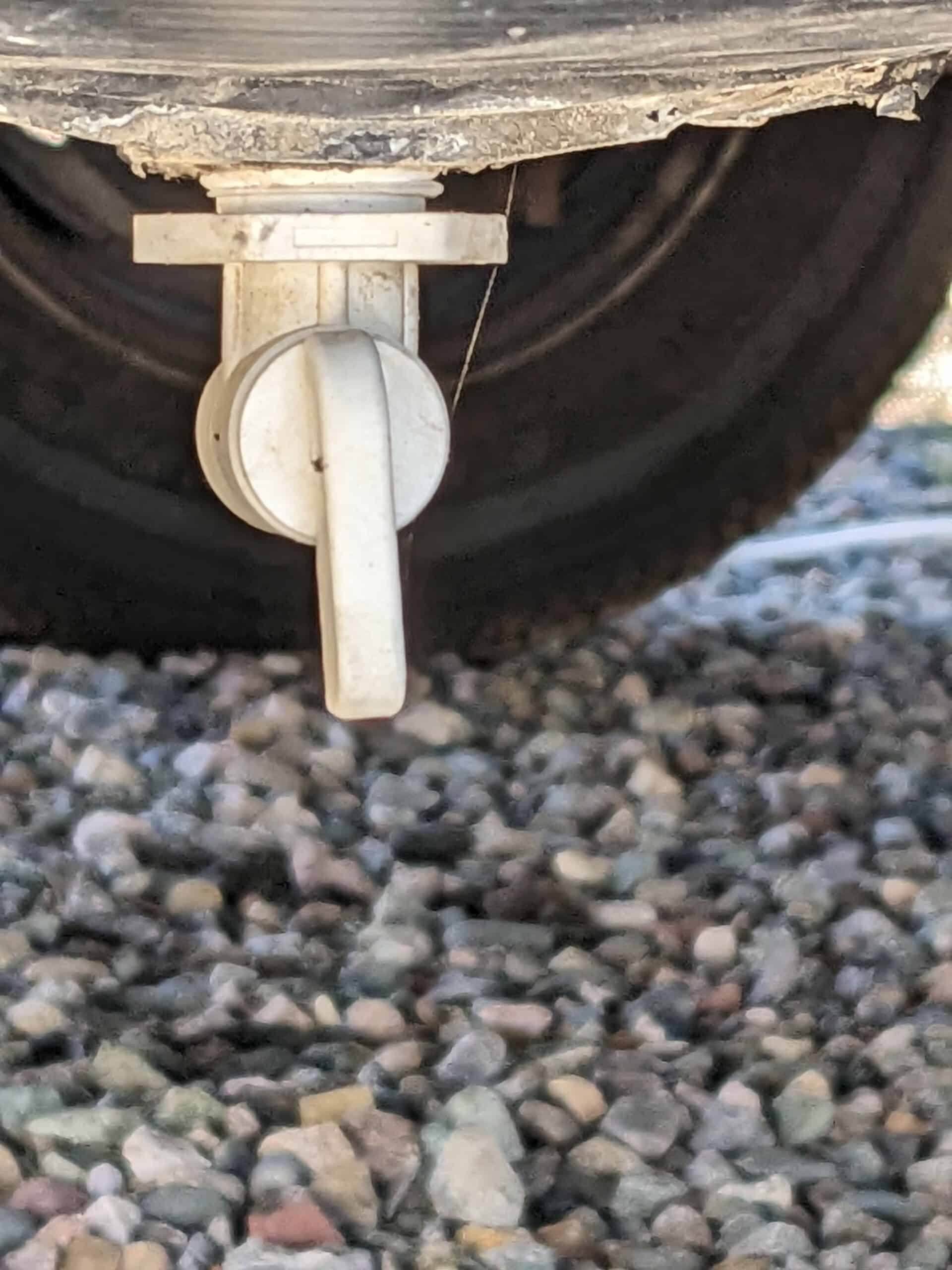
Step 2: Drain Your RV Fresh Water Tank and Hot Water Tank
Under your RV there is a fresh water drain with a valve. Open the valve and drain all the remaining water from your fresh water tank. Do the same for your hot water tank based on the manufacturer’s instructions.
Close both valves once all the water has drained from your fresh water tank and hot water tank.
If, for some reason, you choose not to sanitize your hot water tank, be sure to switch the bypass valve so no water can run through the tank while you’re sanitizing it.
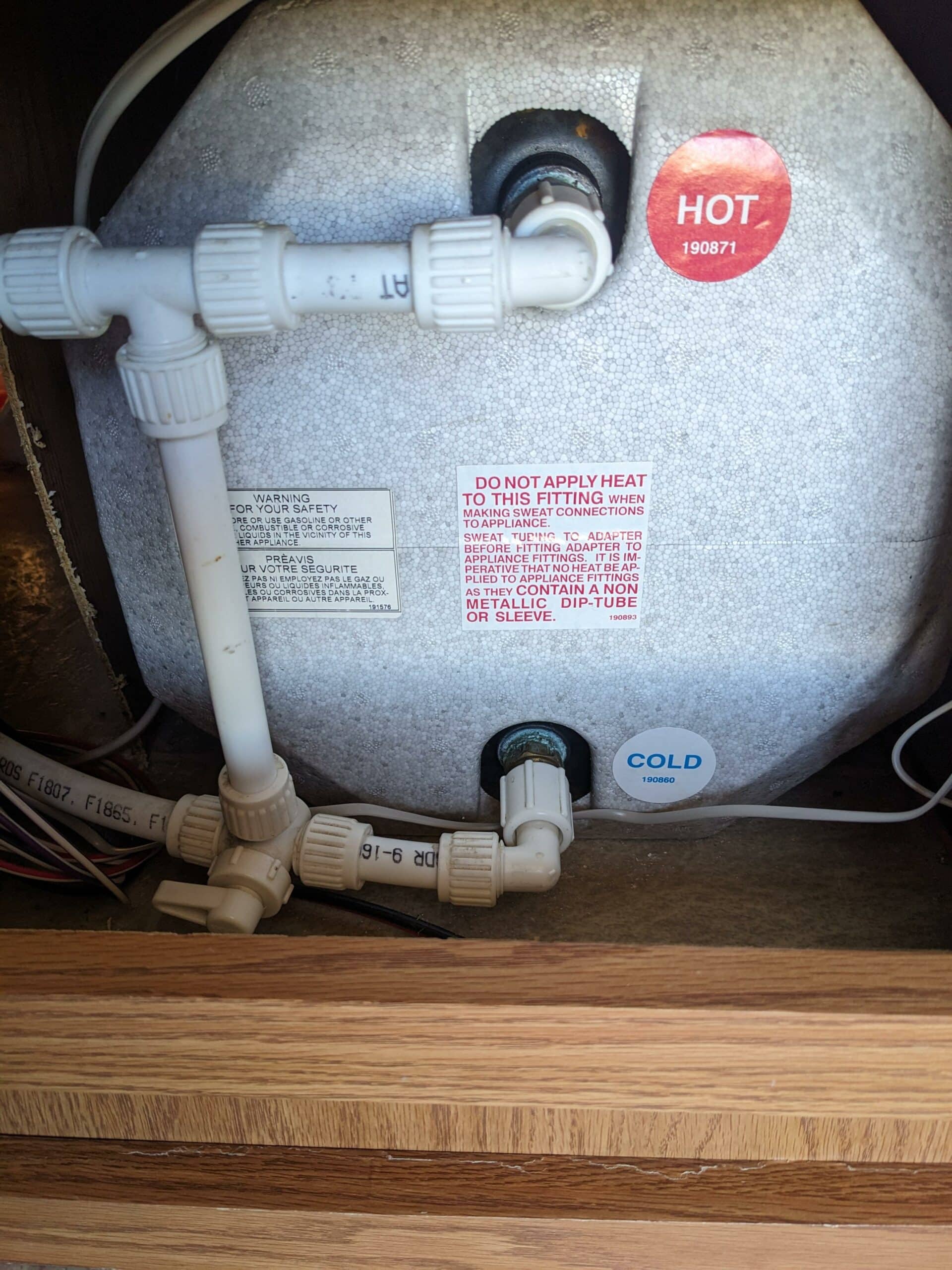
Step 3: Add Bleach Mixture to Your Tank and Fill It Up
Now that you have completed step two and you have calculated how much bleach you will need to sanitize your fresh water tank, it’s time to pour it in.
Warning: never pour undiluted bleach into your water tank! Mix the bleach with water before pouring it into your fresh water tank. Many RVers use a clean one-gallon jug, pitcher, or small bucket with a spout for the bleach and water mixture.
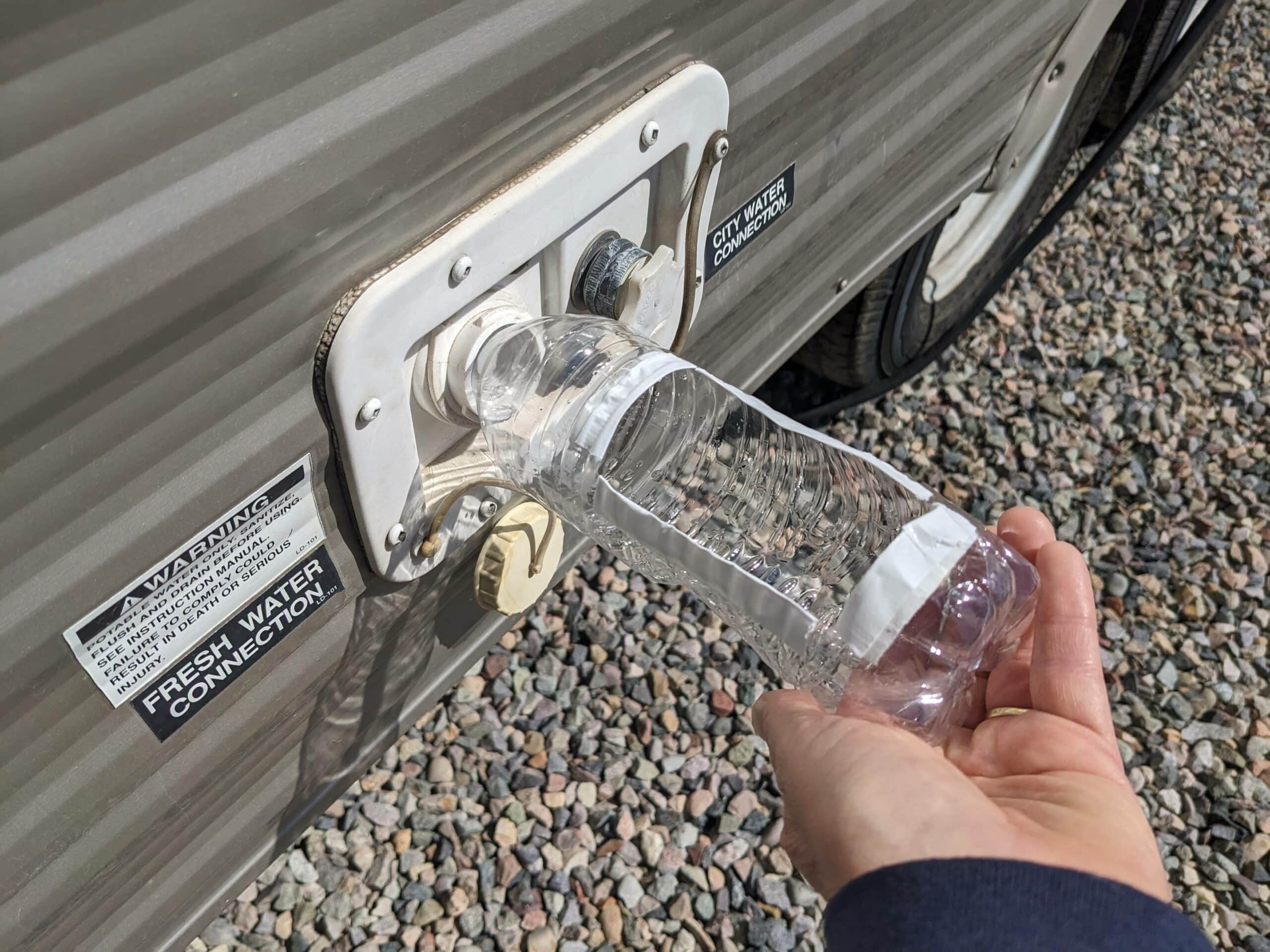
Getting the bleach and water mixture into your fresh water tank can sometimes be a trick. To keep from spilling bleach all over the side of your rig and on yourself, use a commercially made or homemade funnel.
To make a homemade funnel, simply use a disposable water bottle with part of one side cut out and the spout intact. You then put the spout of the water bottle into the fresh water inlet to your rig with the cut-out side facing up and pour the bleach mixture into the cut out part of the water bottle.
It will easily drain into your fresh water tank through the spout of the water bottle. Other RVers simply use a plant watering can with a small spout that will fit into the fresh water inlet.

Now you can fill up the rest of your fresh water tank with clean water.
Step 4: Run Chlorinated Water Through Your System and Let It Sit
After your RV clean water tank is full, turn on your water pump and open your faucets, both the cold and hot side. Let the water run until you can smell bleach coming out of each faucet. This ensures that the bleach solution has run all the way throughout your fresh water system.
Now turn off all the faucets and let the bleach solution sit in the fresh water system for at least five hours, but no more than 10 hours. Many RVers choose to do this step while they sleep. Just be sure you have enough drinking water to drink and cook with the following morning.
If you feel inclined, you can even drive your RV around the block to give every part of your fresh water system a good splash of bleach solution using the motion of the RV.
Step 5: Drain and Flush Your RV Fresh Water System
The last part in the process is to drain the remaining bleach solution out of your fresh water tank into your holding tanks, and refill your fresh water tank to flush out the rest of the bleach solution.
This is best done by continuing to run your faucets until you have drained your RV fresh water tank. Do not allow this solution to drain onto the ground but only into your waste tanks and then into a sewer hookup.

Continue refilling your RV fresh water tank and running your faucets until you can no longer smell bleach. When you no longer smell bleach, you can fill up your fresh water tank completely with clean water or empty it once again if you plan to leave your RV sit unused for more than a week.
If you happen to be in an RV park that’s on a septic system, please ask if it’s ok for you to dump the bleach solution down into their system. You don’t want to be that person who ruins their septic system.
Can You Sanitize Your RV Water Tank Without Bleach?
If you are not comfortable using bleach, you can use vinegar or hydrogen peroxide when cleaning the water tank in your RV. However, unless each is heated to 130 degrees Fahrenheit, they will not be as effective as bleach at killing bacteria in a contaminated RV fresh water tank.
Another option is to use a commercially available product that was created to sanitize RV fresh water tanks. Be sure to use it as directed for best results.
Conclusion
Learning how to sanitize your RV fresh water tank isn’t difficult, and doing it doesn’t take much time or effort to get the peace of mind of having clean, fresh water in your RV for you and your family. A few supplies, some time, and patience are all you need for the regular upkeep of your RV’s fresh water system.
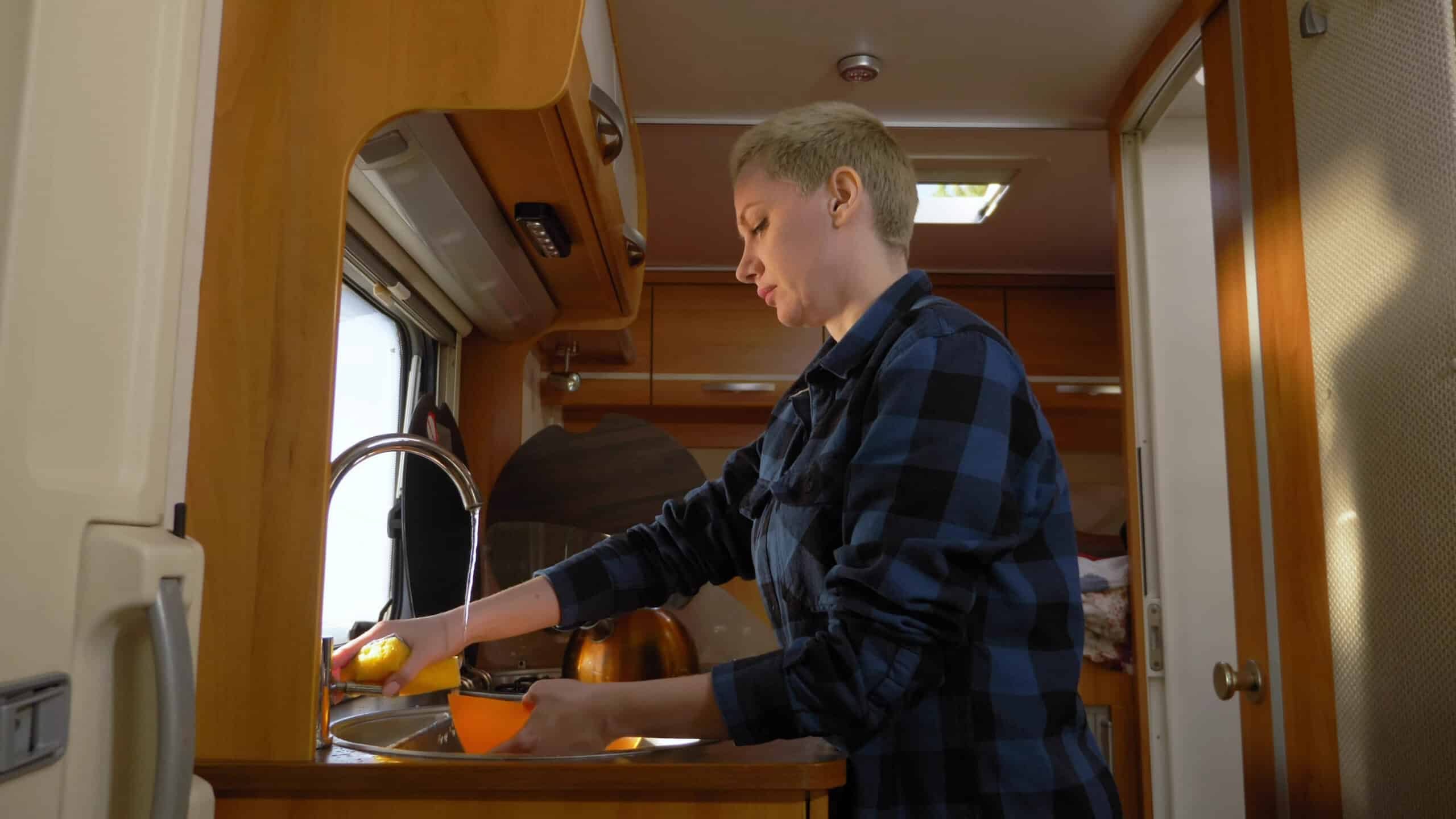
Did you like this post? Pin it to Pinterest!
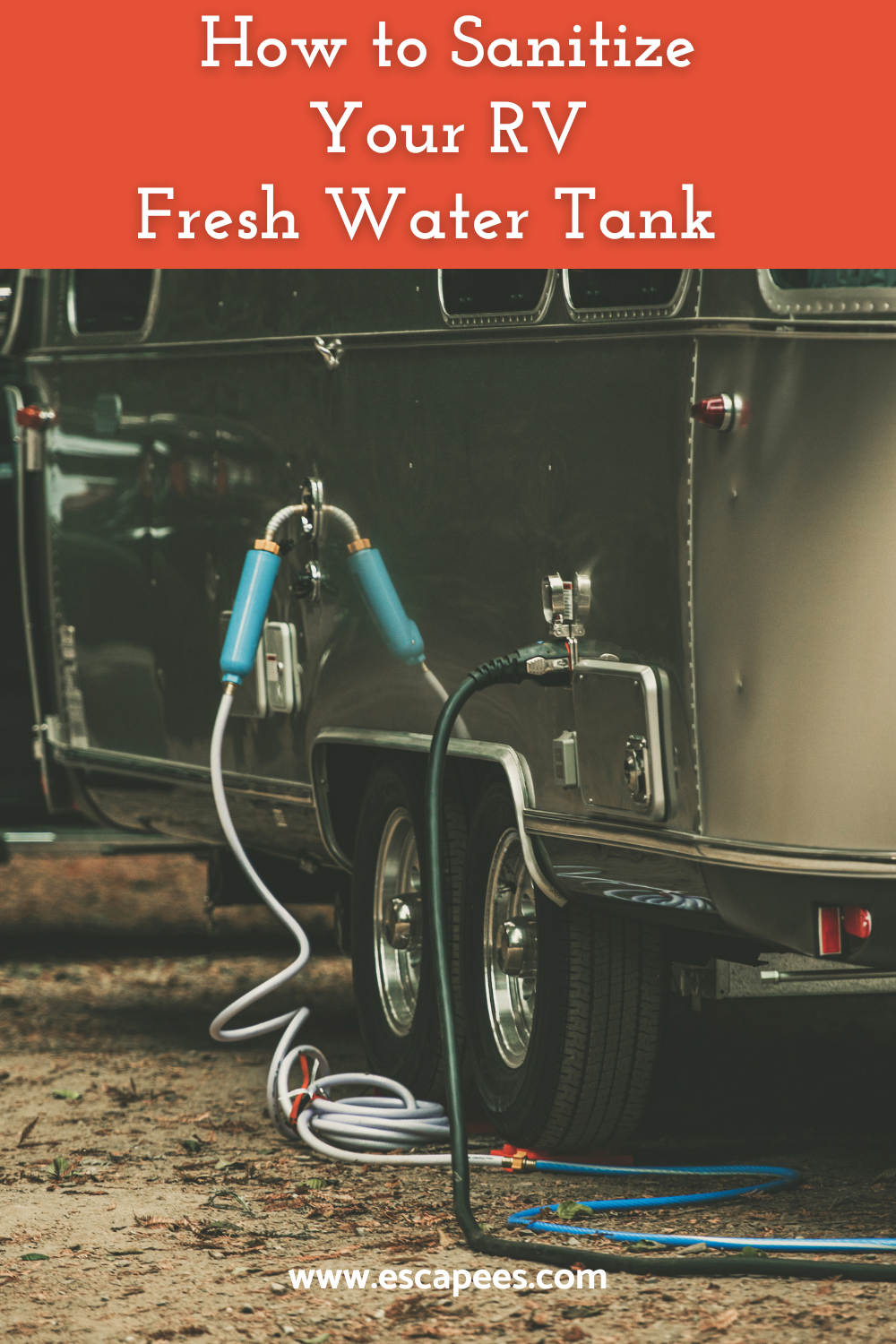

Author
Jeannie Dees
Jeannie Dees has been a full-time RVer for four years. Jeannie retired early from teaching to pursue the nomadic life with her husband, Erick Young. Work camping has been a new experience for them both, but living an adventurous life is not. They love to explore new places and meet new people here at home and abroad, and are always excited for what’s around the next bend.

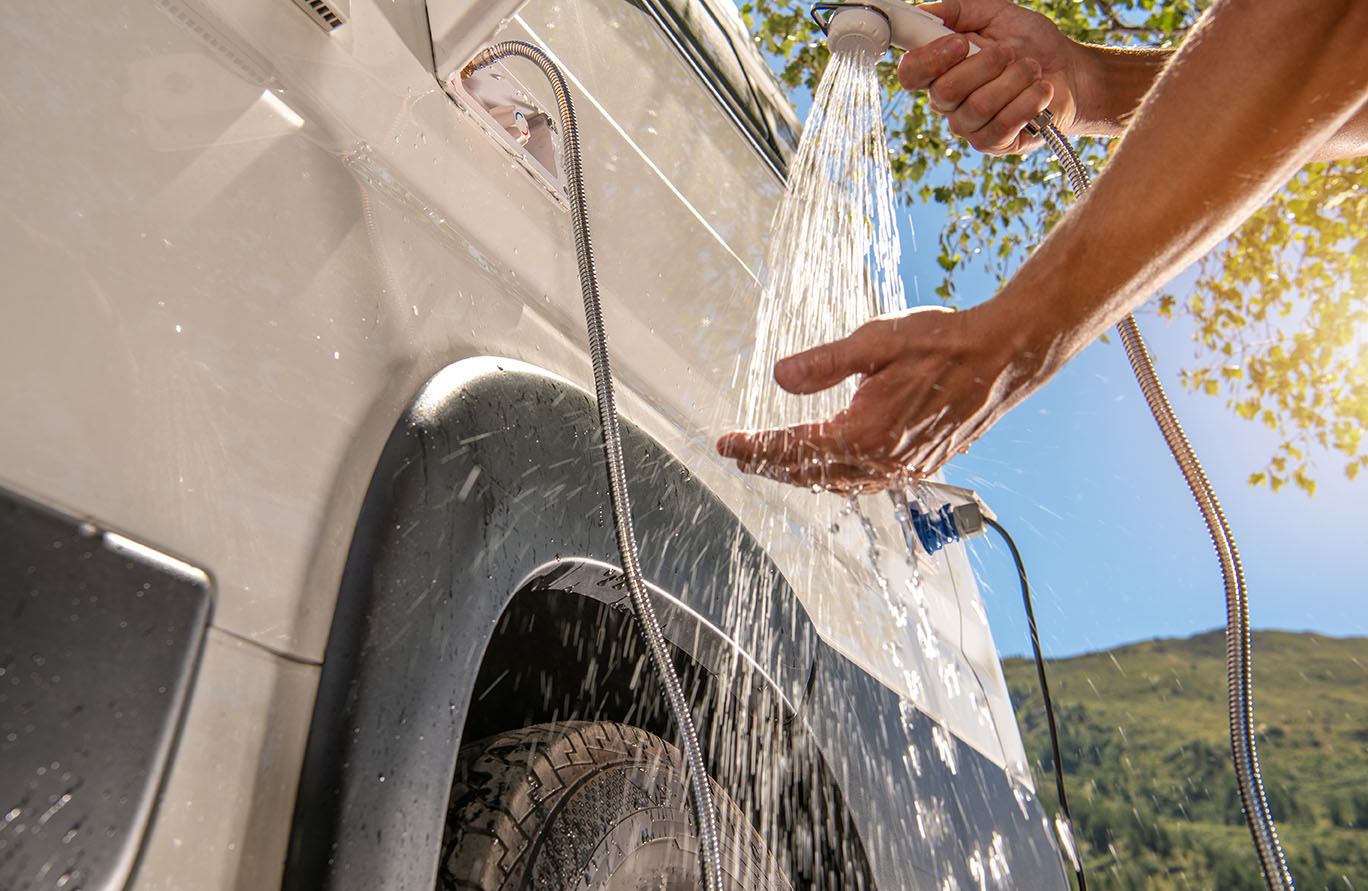








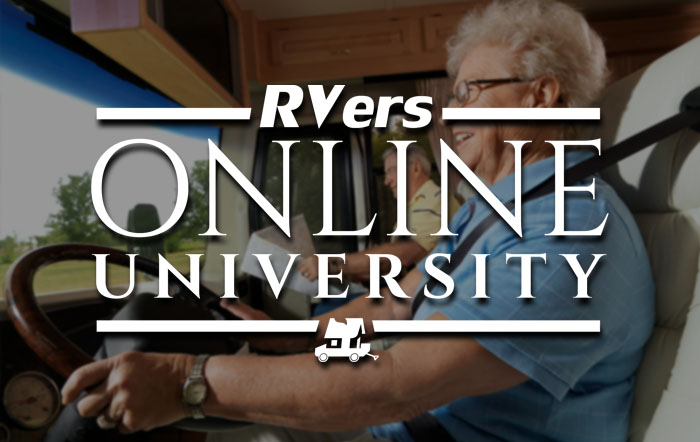

15 Responses
I have been adding a bottle of cleaning strength vinegar to both black and grey tanks while underway. Seems to help. No oder or other stuff detected.
While we focus on RV fresh water tanks in this article, this is a great idea for keeping black and gray tanks cleaner. Thanks for the tip!
Many members now have RVs with AquaHot.or HydroHot.
It would be worth mentioning that bleach causes permanent damage to these units. Very expensive damage.
Hello Boyd! Yes, it is worth mentioning. Thank you so much!
We use a 5 gallon bottle for our coffee and water ( dog.. drinking). Fresh water in holding tank is use for toilet,, shower.. washing dishes
in place of a bleach funnel, pour the bleach into the water hose before connecting to the rv. This helps to override the built in regulators with water tank fill filter screens on the rvs. My coach will not allow anything to pass the screen at the fill inlet but this works without any problems.
I drained the bleach and water mixture from the lines after letting it sit for 10 hours. Do I have to fill and flush it again if I’m going to let it sit for a couple months now? Or can I leave it all emptied out and cleaned. Then refill before my next trip ?
Hi Tommy, if you added any RV antifreeze to winterize your RV, then that would need to be flushed out of your fresh water system before refilling with clean water. Most RVers only sanitize their water tank and lines AFTER it’s been in storage to be sure it’s clean when they are ready to hit the road. So, you may need to do it again just to be sure no bacteria or mold grew in the lines and tank while it was stored. It’s better to be safe than sorry (or sick)!
Great explanation.
Thank you!
Just bought a used motor home.. sinks smell like mold… toilet is moldy also.
After dumping and water flushing all can I use bleach and water mixture to let set and then rinse all again.
Hello Lonna, since you have already flushed out the system, you can use the bleach and water mixture we referred to in this post. You should then rinse thoroughly until there is no more bleach smell.
What if you have a tankless water heater? Do you need to bypass it? I have a Girard tankless heater and there are no bypass valves on it. I assume the heater should at least be off. Thanks!
Hi Kurt! That is a great question. We suggest you refer to the instruction manual for your tankless water heater. We’d hate for anything to go wrong with your water heater! Would you let us know what you find out? We’d love for others to learn here about what to do if they have the same situation you do!
Re: getting Clorox solution into fresh tank (agreeing with J. Worden above) … I have a 27 gallon fresh capacity Coachmen NOVA class B. I mix 1/2 cup Clorox in 1/2 gal. water, pour the solution into a long empty backyard hose, connect hose to fresh tank fill inlet (always through a pressure regulator), then run the faucet until fresh tank is full. I find it simpler than struggling to “pour” the solution into the fresh tank fill port.